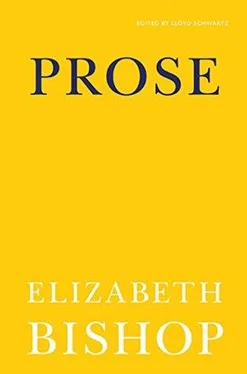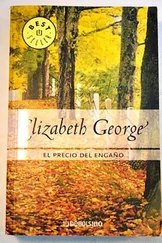In the region of Cariri, until recently the “wild west” of Brazil, land of bandits and religious fanatics, local workmen specialize in making knives and daggers. To this day they made silver daggers to be worn in high boots, and daggers with handles of ivory, enamel or gold filagree. So “wild” is Cariri even now, that during a friendly futebol (“soccer”) game between the teams of two rival towns, above the applause and shouts could be heard the cries of a man selling locally made knives from a basket on his back, like popcorn or Orange Croosh: “Get your little daggers for after the game!”
The art of the saint-makers is traditional, passed on from father to son. Every little household chapel, or “oratorio,” has its wooden images carved by the local saint-maker. Formerly, these saints were sometimes made with the bodies hollowed out, in order to hide gold and diamonds from the government inspectors, and the expression “a hollow saint” is still used to mean a hypocritical person. Figures of saints, made in the days of Aleijadinho, are still being made in the interior. Recently, however, the priests, unfortunately especially foreign priests, not appreciating the primitive in art, and wanting to get money for their churches, have been exchanging these often very remarkable wood carvings for the sentimental contemporary statues of tinted plaster, factory-produced, and sad to say the rural congregations’ tastes are deteriorating as well.
Because of this, many of the good “saint-makers” have now turned to making “miracles” instead, ex-votos, to be offered as payment for promises fulfilled by miracle-working saints at the most popular shrines (Our Lady of Nazareth in Belém, St. Francis of Canindé in Ceará, Good Jesus of Lapa on the banks of the Rio São Francisco, Our Lord of the Good Death in Bahia, Our Lady of Penha in Rio, Our Lady of Aparecida in São Paulo). Each of the churches, usually raised by the Church to the dignity of basilica, has its special rooms for displaying ex-votos, veritable museums of popular art: legs, arms, hearts, heads, ears & eyes, and inner organs, in wood or wax, each attesting to a miraculous cure. Along with them are paintings: fishing-ships, jangadas, saved from storms, hunters from wild beasts or deadly snakes, souls from swarms of devils.
In the field of sculpture, however, the greatest folk-achievement was the figureheads used on the cargo boats on the Rio São Francisco — a custom rapidly dying out. Some of these figureheads are very fine, several feet tall, towering at the bow of the boat, and carved in a style reminiscent of Romanesque sculpture in its strength and simplicity. Animals, women, characters from Afro-Brazilian folk-lore — but principally “the Great Worm,” the most dreadful of the spirits that live in the river.
One speciality that industrialization has not yet touched is the art of carpentry — inherited from the Portuguese ship-builders — particularly the manufacture of […] for flour mills, cotton seed and cheese presses, and other domestic industries. They are complicated pieces, nuts and screws, rollers and scrapers and all worked in hard-wood, and in some cases, such as machinery for making manioc flour or wine or paste from the cashew-fruit, no metal can be used at all. The huge screws, more than six feet high, are carved in spirals, in “bow-wood,” as hard as iron; the enormous wheels and travelling beams are made of whole tree-trunks, without a single nail or screw of metal, held together by a complex system of wooden pegs and joints. The carpenter’s only tools are the axe, saw, adze, chisel, and his two hands.
* * *
Like other primitive peoples, Brazilians of the interior prize their folk-poets, whom they call “singers.” They are often wanderers, playing the violin or guitar, and their verses are improvisations, sung to their own accompaniment but in strict, ancient forms and meters. They appear at rural festas and engage each other in interminable duels of verse, sometimes going on for several days, with the “singers” only stopping to eat and drink. The competitors try to outlast each other in ideas, rhymes, and good-temper. It is an art that could only develop in a Latin tongue like Portuguese, full of rhymes and assonance. The loser of the duel is the one whose rhymes finally fail him, and, exhausted, he yields the victory with a set of verses paying homage to the superior powers of his rival.
These singers are privileged people in the little communities of the sertão. They also have very high opinions of themselves and of their “memories,” the word used to describe “poetic talent.”
“There’s no man like the King,
No woman like the Queen,
No Saint like God Almighty,
And no memory like mine…”
one of them sings.
Before the advent of the radio and television, which now compete with them but so far have not entirely silenced them, these singers were the real newspapers of the backlands; even today they continue to produce detailed and dramatic verse-accounts of the more sensational news. A few days after President Getúlio Vargas’s suicide, a “Brazilian Writer” (as he signed himself) of Recife produced a ballad-pamphlet called “Getúlio in Heaven,” that still sells in the weekly outdoor markets all over Brazil. The recent renunciation of President Quadros has already been put into verses, and the flight of Gagarin, and the biggest and latest aeroplane disaster. Usually the “writers” (who can’t write; someone else takes down the verses for them) sing and declaim their compositions and then sell them in pamphlet form to the by-standers. The covers of some of these pamphlets are themselves works of art; although the text is badly printed, on poor paper, full of misprints and misspellings, the outside sheet is ornamented with crude but impressive wood-cuts.
* * *
Christmas (sometimes called “The Birth”) and New Year’s, or the Good-Year, are celebrated all over Brazil with festas that vary according to local traditions and the racial group predominating in the region. In the north and northeast, with ancient traditions of the “pastoral,” the favorite celebration is the Bumba-meu-boi (“Beat my ox”). A little group of men (as in the classical theatre, women never take part in these performances) act out a story whose hero is the ox, who dances, sings, grows sick, dies, and then comes to life again to general rejoicing and more songs and dances. The bull, with his two dancers inside, is followed by other characters: Matthew, the cowboy, the horse, the donkey, the priest (who comes to give the last rites to the dying ox), the doctor (with an enormous clyster syringe, like a character in Molière), the clown, and the chorus of […]. The music and action are interspersed with songs, and there is always a great deal of ad-libbing in the dialogues, whose wit and appositeness can make the reputation of a Matthew or a clown.
In the coastal regions, where Portuguese influence is stronger, they dance “Fandango” or “Cheganças” (“arrivals”): in a ship built on the site of the festa, they present the dramatic story of the ship Catarineta, based on an old Portuguese tale in verse that dates from the time of the discovery of Brazil. And where Negroes predominate, the play is a “Congo,” also a dramatized tale: at the court of a king of the Congo, rivals betray the kingdom to the white invaders. The crown prince discovers the plot and is killed; then follows a battle, sometimes ending in tragedy and sometimes with the victory of King Congo. All the characters are richly dressed, with velvet capes, satin breeches, and golden crowns. The ambassador of the whites is always an imposing Negro dressed like an English Admiral, with a plumed hat — like Lord Nelson.
Читать дальше












